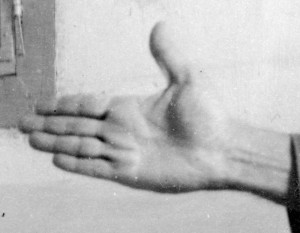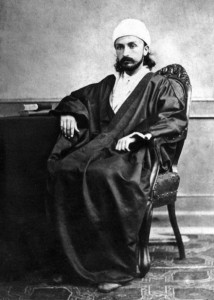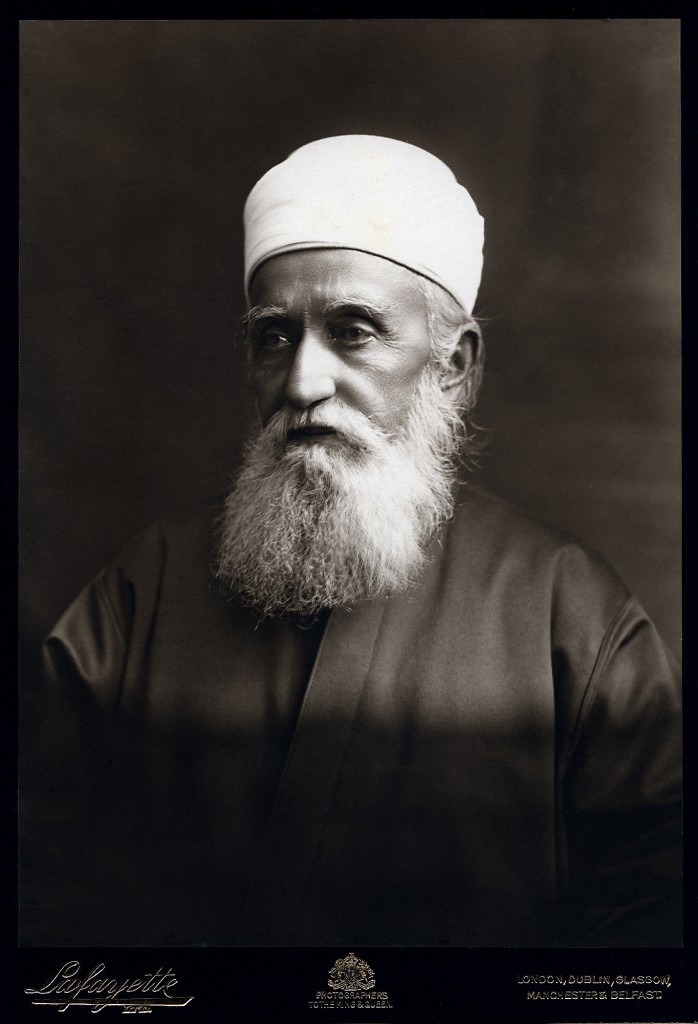Photography and ‘Abdu’l-Bahá
A life untouched by photography is unusual today. Our world is saturated with imagery and our encounters with it deeply affect our perception on an emotional, political, and ideological level. Photographs communicate ideas and facts, convey experiences and represent realities we would otherwise have no access to. The habit of taking pictures is also a common aspect of our personal lives. Even those with no interest in photography as an art form or profession are likely to have used a camera recreationally or appeared in a photograph.
Imagine a time in which these norms did not exist, in which access to photographs was still somewhat rare. In 1911, photography was just emerging as a popular art form. Since its invention, it had passed through stages of novelty and was beginning to gain cultural and historical relevance as a tool of communication and a record of personal and public events. Abdu’l-Baha Himself had only been photographed three times in His whole life by the time He embarked on His journey to the west. Two of the photos were taken in Adrianople when He was 24: a passport photo and a group photo with several believers and members of the Holy Family. The third was merely an image of His hand, captured at the insistence of a pilgrim in Akka; the hand was all He would allow.
 Lady Blomfield was the only one among the group of Baha’is who received Abdu’l-Baha at the dock in London who knew His face as only those who had been on pilgrimage in Akka had ever beheld Him. Now imagine being one of the few Baha’i’s in London in 1911, having never set eyes on Abdu’l-Baha but having cherished His messages and teachings from afar. Imagine the anticipation of His arrival.
Lady Blomfield was the only one among the group of Baha’is who received Abdu’l-Baha at the dock in London who knew His face as only those who had been on pilgrimage in Akka had ever beheld Him. Now imagine being one of the few Baha’i’s in London in 1911, having never set eyes on Abdu’l-Baha but having cherished His messages and teachings from afar. Imagine the anticipation of His arrival.
His trip to Europe and America exposed Him in more ways than one – it meant more believers in the west got to meet Him, it meant more people heard about the Baha’i Revelation, and it meant there were more images of Him recording His life, His existence, and those historic moments in time. At the insistent request of the friends, ‘Abdu’l-Bahá had his first formal portrait taken in London at a Lafayette studio. After that many were taken in Europe and in the States and these now serve as a historical record of all those profound moments for believers who got to encounter the Personage of the Master for the first time. Now people outside of the Holy Land got to see Him, either in person or in imagery.
The emergence of the technology of photography, and its availability during the time of ‘Abdu’l-Bahá’s journey, bears witness to the significance of the Baha’i revelation, to the import of the Master’s journey to the progression of the Faith, and it documents how the Faith spread to the corners of the globe so quickly. As a result of His journey we have Paris Talks, we have the legacy of early believers who constituted the seeds of the administrative order later to emerge, and we have all the images of ‘Abdu’l-Bahá that are familiar to us today, and that serve as our only connection and the the closest thing we have to that moment on the dock in London.




I had never thought of the connection between photography and the Master before. How interesting. I am really enjoying your blog!
without photography, the fulfillment of this cryptic prophecy – every eye shall see Him – could not be literally fulfilled! smile, as they say before the camera clicks!
That’s a great hand – the fingers are long and well balanced indicating a good balance between emotional, physical and mental health; the fingers are straight indicating honesty, the palm is square and broad indicatiing qualities of leadership; the palm is also cupped indicating compassion. I would trust this man.